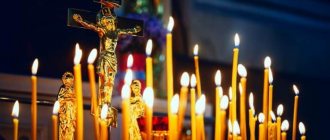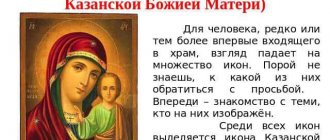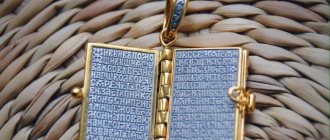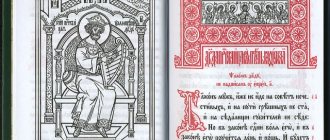“Woman, your faith has healed you!” These words of our Lord Jesus Christ, recorded by the apostles in the Holy Gospel, reveal the sacred meaning of faith and prayer as part of it. True faith, without doubt and hesitation, works real miracles. Akathist to Luke of Crimea and is one of the instruments of true faith, which leads to the healing of a sick body and spirit.
Miracles of newfound health, liberation from infirmity, and return of strength are granted by true faith and sincere prayer. After all, Saint Luke was a surgeon during his lifetime. Evidence of the great spiritual power of Luke of Crimea is his healing powers, which thousands of people not only from Russia, but even from all over the world come to Crimea, Simferopol, to touch.
Akathist to Luke Krymsky
The prayer appeal to this saint and confessor is the most recent in Christian time. It is noteworthy that not only Orthodox Christians resort to this prayer, but also believers of other faiths, and even atheists. Akathist to the saint is read not only about deliverance from physical ailments, but also from mental torment, asking for help to overcome temptation and sin.
Why do they read?
If your soul is restless, when you have lost your physical strength, disappointment has set in, and bad thoughts are overwhelming, it’s time to resort to the help of the saints.
Akathist to Saint Luke, in modern language, is an effective method of cleansing the body from disease and the soul from sin.
They turn to the saint with prayer when:
- a complex operation awaits;
- there are problems with the musculoskeletal system, vision;
- injuries, other serious and, as often seems, incurable illnesses.
After all, Luka Voino-Yasenetsky was a talented doctor in the world, a surgeon with a capital S, who saved many lives.
Reading rules
An akathist to Luke of Crimea about healing and recovery is read twice a year: in May on the 29th, and in June on the 11th. These are the days of remembrance of the priest. The rules for reading the text do not differ from the general Christian rules for reading prayers. You need to start reading the akathist with a prayer to God for the forgiveness of sins.
So, here are the rules for reading the akathist to this saint about healing:
- Light a church candle in front of the icon of St. Luke.
- Read the akathist with faith in the help of the saint.
- Read the prayer daily.
- Akathists are usually read while standing, an exception can be made for patients who find it difficult to stand. In this case, you are allowed to pray while sitting and even lying down.
However, God is merciful - you can pray everywhere and whenever there is a spiritual need for it. In church, at home, on the road, the main thing is that the prayer is sincere.
Structure
The Akathist includes 13 kontakia and 12 ikos, which are read alternately in a certain rhythm. The last - 13th - kontakion is read three times, and then the 1st ikos and 1st kontakion are repeated. This is the structure of the akathist, at the end of which a prayer to St. Luke should be read.
Text and interpretation
Archpriest Georgy Severin, being the rector of the Church of the Three Saints in Simferopol, compiled this akathist.
This is a church hymn of praise to the glory of the saint. Arriving at the temple, a believer can order a prayer for health and choose which saint to serve with an akathist.
Saint Luke, having gone through the ascetic path from a layman to an archbishop, enduring many trials and hardships, was canonized after his death and entered the ranks of modern saints. The Akathist describes moments from life, glorifies the virtues and deeds of the saint, who, in response to the petitions and requests of a person, heals his body and soul.
Russian saint
Luka Krymsky, having Polish roots, was ranked among the Russian local saints in 1995, all-Russian - in 2000. He died recently - in 1961, on the day when they wanted to evict him from his rented apartment for his popularity among the people as a doctor who treated absolutely free. Many who were caught alive talk about the great love he had among the people. But when God wants to glorify His saint, he becomes known to the entire Christian world. The life of the saint was translated into:
- Greek and Albanian;
- French and Romanian;
- English and other languages.
The Greeks glorify the Great Healer more than we do. There are so many cases of helping the sick that they say that they have taken our saint for themselves. This is what faith means. They saw him with their own eyes: he appeared to some in reality, to many - in dreams. The miracles he performed are stunning. The fame of the Holy Healer is growing every day. Thousands of Russians will thank (you can read the Akathist) Luke for his recovery until the end of his life.
Note: The Greeks, after the abundance of miracles performed by Luke, built 30 chapels in his honor. Everyone knows what it looks like; there are icons in every church. Many visit Crimea for the sake of this Saint, to personally express gratitude and honor the memory.
Who is Luka Krymsky
Luke went from a zemstvo doctor to an archbishop, and after his death he was canonized. Born into the family of a pharmacist, he became an outstanding surgeon who saved hundreds of lives. However, in mid-life, after the loss of his wife, he became an Orthodox clergyman, while remaining a practicing surgeon.
He was not afraid to preach the faith of Christ even during the years of persecution of the church. During 15 years of episcopacy, he never betrayed the faith and parishioners, despite denunciations, arrests and exiles. After his death, he was canonized. There are legends about the miracle of healing from the holy relics of this saint of God and the healing power of his icon and prayer to the saint.
Biography
Voino-Yasenetsky Valentin Feliksovich was born in the city of Kerch, Tauride province of the Russian Empire on May 9, 1877. He devoted the first half of his life to the study of medicine and surgical practice. He is not just a talented surgeon, but also an outstanding scientist who has written dozens of works in the field of surgery and anesthesiology. Valentin Feliksovich received his Doctor of Medical Sciences degree, went through the path of a field military surgeon, and saved hundreds of lives.
And here his life took a sharp turn. After his wife passed away in 1919, he made the final decision to devote himself to God and serving people. In 1922, Valentin Feliksovich took monastic vows and a year later became Archbishop Luka of Crimea. He headed the Crimean diocese for 15 long years - during the most difficult years of persecution for the Orthodox Church. He was arrested more than once and even sent into exile. But he did not abandon his mission as a shepherd.
Felix Voino-Yasenetsky was repressed and spent about 11 years in exile. He was rehabilitated after his death - in 2000, five years before that he was canonized by the Orthodox Church of Ukraine. Immediately after his rehabilitation, the Russian Orthodox Church canonized him and ranked him among the host of confessors and new martyrs. The relics of Luke of Simferopol (Crimean) were found in 1996.
The miraculous icon and the relics of Luke are located in Simferopol in the Cathedral of the Holy Trinity. It was Crimea that became the custodian of the healing relics and spiritual heritage of this holy saint. The earthly life of the great doctor, scientist, and man ended in 1961. He lived for 83 long years and then gained eternal life. Today his icon is in the office of every Orthodox (and not only) doctor.
What do they pray to him for?
Even the most famous surgeons believe that Saint Luke contributes to the successful performance of operations and the fastest recovery of the patient. There are many testimonies of miraculous healing from the relics of the saint, from prayer in front of his icon, from faith in a miracle.
People turn to the saint in prayer for any bodily ailment. Especially when it comes to diseases of bones and joints, fractures, and other injuries of any severity. Prayerful appeal to him also helps with eye diseases, as well as with mental disorders. Reading holy texts in front of an icon of a saint saves you from sinful thoughts.
Candle burning in the dark
How many are there who will give up comfort, prosperity, and honor for the sake of preaching about Christ? And a world-famous scientist, who was 80 years ahead of medical research, chose suffering. When hundreds of clergy were arrested, he took the rank, and along with his cassock, a martyr’s crown. 11 years of camps are only part of the test.
While teaching others and performing operations, Luke preached by appearing at all social events in priestly vestments. Without saying a word about faith, he confessed Christ with just his appearance. Coming to churches, performing services, giving speeches, he attracted a sea of people to himself, and gained enormous fame among believers.
To get into the temple, the place was occupied in the evening! At the same time, it was hidden from the majority (especially doctors) that he was a world-famous scientist. His works were better known abroad than here. The doctor from God was greeted with jubilation by the common people, but hated by those in power. He saved thousands of people from death (especially during the Second World War), and at the same time served a sentence on ridiculous charges.
When is it customary to read the troparion?
Saint Luke was born at the end of the 19th century. He grew up in a Catholic family, but as soon as he reached adulthood he converted to the Orthodox faith. By nature, Luka had a special sharp mind. Almost all sciences were easy for him. At a young age, the saint entered medical school and trained as a surgeon.
But despite his profession, he devoted his entire life to serving people and Jesus Christ. He healed people from many serious diseases. Therefore, even after his death, people bowed to his image and offered prayer requests:
- about healing from various ailments;
- about the successful completion of the operation;
- about the prudence of children;
- about help finding a good job.
The saint will definitely help all believers who need it. The main thing is to say petitions and read the akathist, adhering to the recommendations of the clergy.
Troparion and kontakion to Luke of Crimea are components of the akathist. It is advisable to read it in full with the blessing of the priest for 40 days. But sometimes it is allowed to read its short form - kontakion and troparion. The text of a short hymn about this saint glorifies the saint in monasticism. It was then that he changed his worldly name and began to follow all the Commandments of God.
As a clergyman, he was able to achieve great success not only in serving the church, but also in medical practice. He didn't have an easy life. The saint was constantly arrested and often interrogated. He was even sent to prison. At the end of his life, he had many different diseases, due to which he lost his sight. But even being blind, he had spiritual vision and could see the souls of believers.
How to read Akathist correctly
You can pray by reading only the Akathist to Saint Luke. If you have the opportunity and strength, it is more correct to include a set of prayers. Whatever option you choose, you must work from the heart, with love and faith in the Heavenly Powers. The result depends not so much on the number of prayers, but on a pure, sincere attitude towards the saint of God.
It is advisable to follow this order: First, read the usual beginning of morning prayers. If the Rule is being read, then after reading it, immediately begin the Akathist. There is no need to repeat “Conception.” If the Rule is not readable, then add the following:
- “Through the prayers of the saints, father...” Glory:
- “Heavenly King...” - a message to the Holy Spirit.
- "Trisagion" - 3 times. Glory:
- "Holy Trinity..." “Lord have mercy” - three times. Glory:
- "Our Father…".
- “Come let us worship...”
- Psalm 50 and the Creed.
- Akathist to Luke of Crimea.
- At the end: “It is worthy to eat...”. Slava: “Lord have mercy” - three times.
- The usual ending: “Lord I. X….(Luke of Crimea)…”. Amen.
If relatives read for the sick person, then their love for their neighbor and compassion are the basis and strength that bears abundant fruit. To kindle good feelings towards Luka Krymsky, find out as much as possible about him. Read reviews from people who have benefited. When you become imbued with sympathy for his life, you will become closer and dearer.
Conclusion: It is imperative to turn to Luka Voino-Yasenetsky for healing, especially when surgery is required. Apply the icon to the sore spot, read the Akathist, believe that a miracle will happen for the glory of the Lord Jesus Christ.
In addition, learn from him to live in peace, without losing faith and holiness. God wants us not only not to get sick, but to be saved for an eternal stay in Paradise. For example, as a Crimean doctor, professor of medicine, world-famous scientist and part-time Saint Luke.







